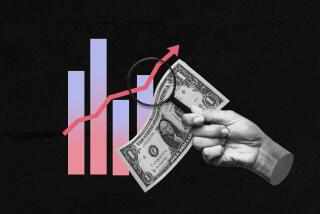Wealth disparities by race grew during the pandemic, despite income gains, report shows

NEW YORK â A strong performance in financial markets, particularly an outsize gain for the stock market in 2021, helped entrench existing trends of wealth inequality during the pandemic, new data released this week show.
According to a report from the New York Federal Reserve Bank, the real net worth of white individuals outgrew that of Black and Hispanic individuals by 30 percentage points and 9 percentage points, respectively, from the first quarter of 2019 through the second quarter of 2023.
The period featured a remarkable level of government financial support and, after the initial shock of the pandemic, a surprisingly strong job market.
The unemployment rate for Black Americans is now at 5.3%, near a record low, compared with an overall unemployment rate of 3.7%. Earnings for the typical Black full-time worker are up 7.1% since before the pandemic.
Closing the wealth gap is more difficult because a significantly larger number of white households traditionally have money in stocks and mutual funds. A separate Fed survey shows that as of 2022, about 65.6% of white households had investments in stocks, compared with 28.3% of Hispanic households and 39.2% of Black households.
âThe study really shows the difference between making gains when it comes to income, and closing that gap, versus when it comes to wealth,â said Janelle Jones, vice president of policy and advocacy at the Washington Center for Equitable Growth.
While government support such as increased unemployment benefits and stimulus checks helped stave off a COVID-induced recession, financial asset prices rose so significantly with the reopening of the economy through 2021 that racial wealth disparities increased.
And while those market-linked assets did fall in 2022 when the Federal Reserve rapidly increased interest rates, âthose declines did not fully offset the earlier rises,â according to the New York Fed.
âMuch of the divergence in net worth by race and ethnicity since 2019 can be attributed to divergence in the real values of financial asset holdings,â the report said, including the fact that Black households have more wealth concentrated in pensions than in stocks, mutual funds and exchange-traded funds, or ETFs.
More than 50% of Black financial wealth is invested in pensions, the New York Fed found. Less than 20% of Black wealth is stored in private businesses, corporate equities and mutual funds.
In contrast, less than 30% of white financial wealth is invested in pensions, with about 50% invested in businesses, equities and mutual funds.
âBlack workers are still more likely to be unionized, which may play a part in the pension story,â said Jones. âBut how folks are exposed to the ability to invest in the stock market â whether or not itâs something they grow up doing â we know thatâs different for white families than for people of color.â Black family members are less likely to get an inheritance, she said.
Still, Treasury Deputy Secretary Wally Adeyemo said Wednesday that economic conditions are improving for Black households, citing rising employment and wages since before the pandemic and an increase in Black business ownership and participation in the stock market.
Adeyemo suggested that some âpolicy prescriptionsâ might be needed to even out the distribution of financial wealth in the U.S.
âThe gap between Black and white wealth in America is still too great,â he said.
More to Read
Sign up for Essential California
The most important California stories and recommendations in your inbox every morning.
You may occasionally receive promotional content from the Los Angeles Times.










